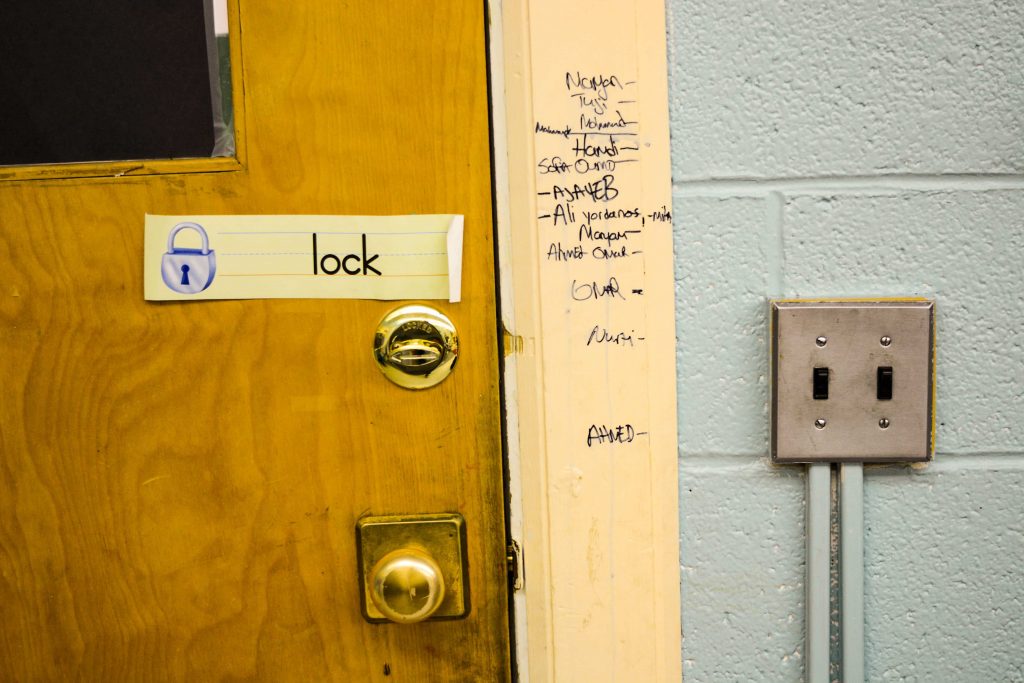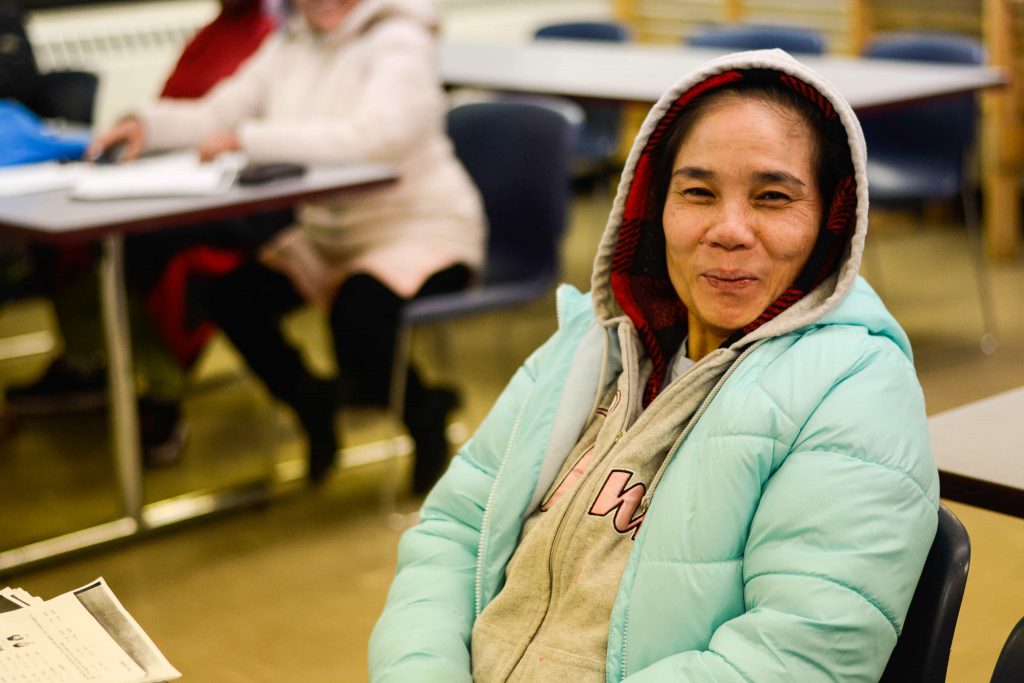Northside Learning Center fosters community through literacy
Northside Learning Center fosters community through literacy

On the first floor of The Northside Learning Center children hug, then dart down the linoleum floored hallways between classrooms. On the second story, 8-year-old Omar chats cheerfully while working on a puzzle of the solar system. Across the hall, a room full of teenage girls in brightly colored head scarves sit around circular tables reading about the Reformation and completing science worksheets. In the basement, a group of adults facing a white board recite “A – E – I – O – U,” out loud, until their instructor feels they’ve reached a confident volume.
Three nights a week, this building fills up with newcomers of all ages – refugees and immigrants to the US, many of whom are native Somali and Arabic speakers, still learning English. Founded in 2009, this center was located above a pizza shop and Dollar General. In 2013 it was relocated into what used to be a Catholic elementary school – now conveniently positioned directly across the street from a mosque, so the many Muslim students who frequent the center can just walk across the street for evening prayer.
The Center is a nonprofit organization that provides both school aged children and adults with English and native language literacy instruction. Skills based classes that the students may not be able receive during regular school hours, or at all for working parents and adults are also offered.
“If you’re 16 years old and you come to the US with no formal education and no English experience,” Mary-Jo Robinson, Associate Director of the center explained, “you’re automatically placed in a ninth or tenth grade classroom and expected to move through from that point on in the education system, the same way a native born counterpart would be expected to.”
The high concentration of cultural diversity and languages among immigrant and refugee families in Syracuse makes offering instruction very difficult, according to Jacqueline Leroy, the Director of the English as a New Language department for Syracuse City schools. “The reality is, in our district we have more than 80 different languages represented,” she said. “We don’t have the capacity in our school district, in the state of New York, or nationwide to do what we think we would like to do that would be in the best interest of our students. Because those individuals who are both qualified and bilingual for the most part, don’t exist in 80 different languages.”
Out of the more than 30 schools in the Syracuse City School District, two elementary schools have incorporated bilingual Spanish courses into the regular curriculum, with an emphasis on cultural as well as language retention. Other multilingual coaches and tutors are scattered across the district’s schools, but the fully bilingual programs are still only in elementary schools, and only cater to the approximately one third of SCSD students whose native language is Spanish.
“I’ve seen students who have been in the US for years, and they still can’t read properly,” said Dina Eldawy, an SU student and tutor at Northside. “What you end up noticing as a volunteer is you and the student are so focused on submitting these worksheets for the next day, that you realize that you’re not actually taking in the information,” she said.

SU senior Dina Eldawy often tutors in the teenage girls room at the Northside Learning Center.

The Catholic school turned community center still sports most of the elements of a traditional classroom
Nearly all the school aged children that come to Northside are enrolled in the Syracuse City School District, explained Mark Cass, Executive Director of the center. Evening classes at the Center offer supplemental homework help to students enrolled in public schools as well as free childcare for adult learners.
Many of the current educators and staff members are former Northside alums, and are able to apply their experiences and more developed language skills to their teaching. Robinson started volunteering at Northside when she was a student at SU in 2010. “Two of our head teachers now, were some of the first students I worked with in the earlier years,” she said. “And they had literally just arrived in the US, and now they’re both in university and doing exceptional things beyond just teaching in our classrooms.”
Cass estimates that Northside sees around 250 students a year, with equal numbers of adults and children. However, he considers the approximately 100 educators that teach there to be part of the same ranks, as there is a constant cultural and social exchange going on between both teachers and students.
Robinson refers to the staff and volunteers as “secondary beneficiaries” of the offered courses. “We consider all of our students to be on the same playing field as all of our staff. So this idea that we all come to learn together and offer each other what we have to offer, which really helps us to build trusting relationships with our students,” she said. “We like to call ourselves a learning community.”
When children arrive in the evening, they know exactly which classroom to run to, Robinson noted. She added that parents may approach staff members to ask questions about opening a bank account or finding employment, and that the students both young and old make friends while spending time at the center.
The SCSD district has taken notice of the center’s influence, and worked with them on a pilot program that was introduced this summer called Steps to The Seal. High school students who can demonstrate proficiency in both English and their native language, can now earn a seal of biliteracy on their diploma. “Our job is to find the teachers who are bilingual, multilingual,” Cass said. “And their job was to bring the supplies, support, and classroom management so [English New Language] teachers come.”
This speaks to a goal that both Leroy and Cass have – promoting English literacy, but not at the cost of cultural retention. “We’re not telling you you should be American,” Cass said, explaining that center isn’t there to promote assimilation, but rather, education.
“The community response is just enormous,” he said “Because you know when someone says, I value your language, I want your kids to learn it – that feels pretty good.”

Teenage girls like Habiba (left) socialize and work on homework at the center a few nights a week.

Adult learners work on English literacy, as well as developing skills for employment.





